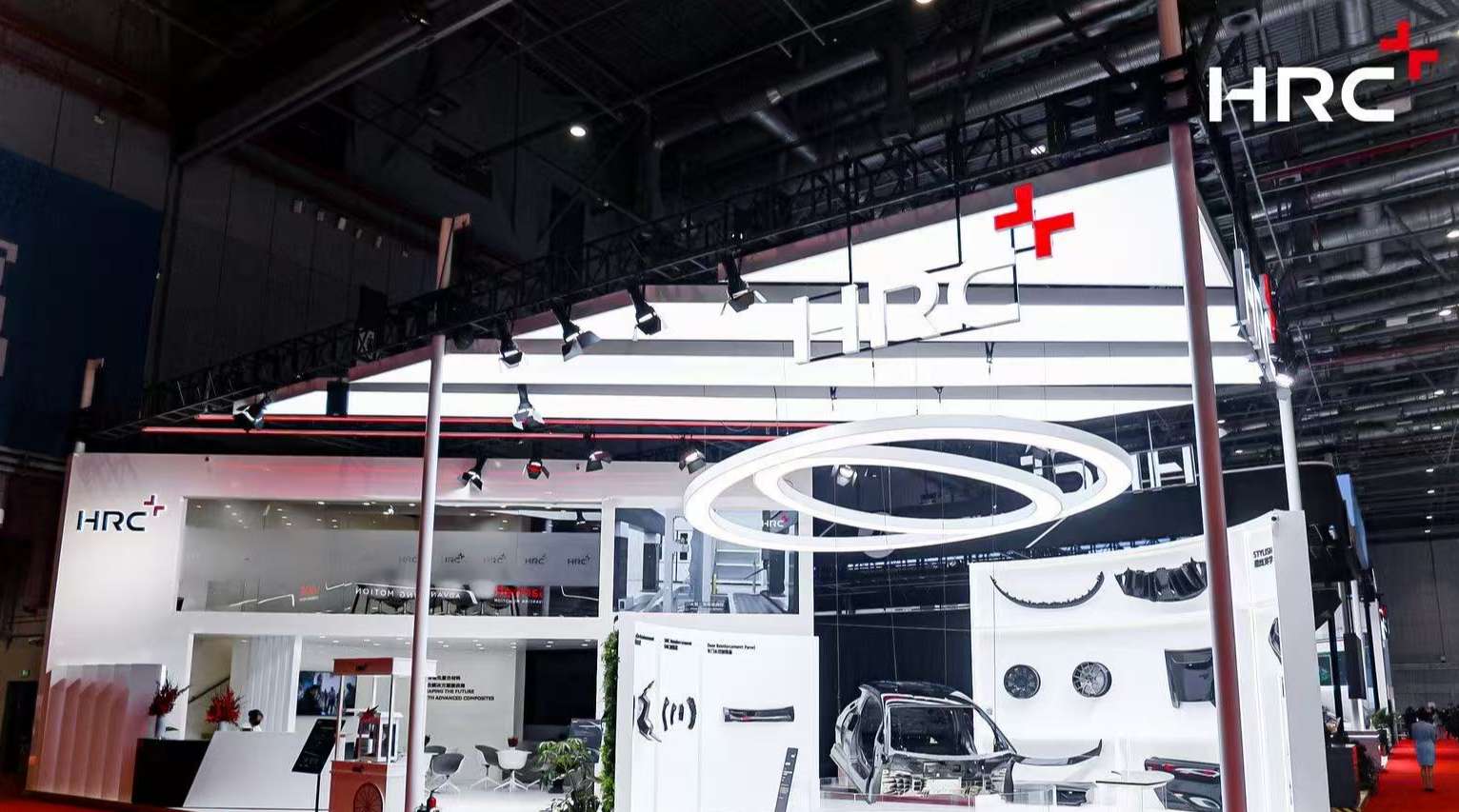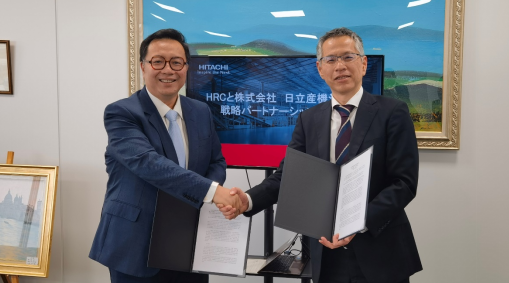Lighting up mobility technology with materials, HRC brings advanced composite product matrix to the 2025 Shanghai Auto Show
From April 23rd to May 2nd, the 2025 Shanghai Auto Show with the theme of “Embracing Innovation, Empowering the Future " is being held at the National Convention and Exhibition Center. The event has reached a new scale record, attracting nearly a thousand renowned enterprises from 26 countries and regions. With numerous world premieres and a showcase of leading technologies, the event fully demonstrates the technological advancements and innovative breakthroughs of the global automotive industry.
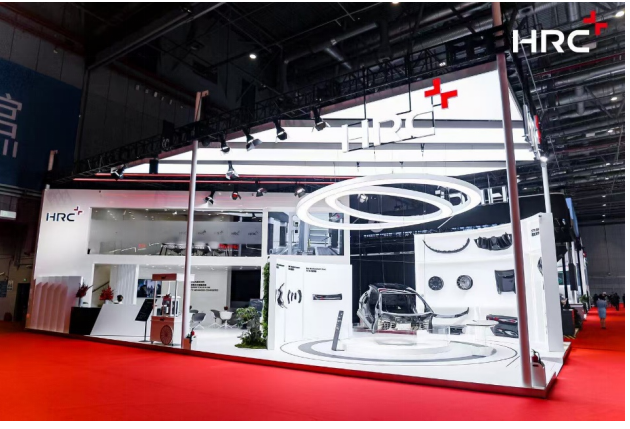
HRC, the global leading composite solution provider, has once again made a remarkable appearance in Hall 2.2 through three theme display areas - “Smart Materials", “Stylish Materials" and "Sustainable Materials".
The display areas presents cutting-edge breakthroughs in carbon fiber composites for automotive lightweighting, high performance, and sustainable development, creating an immersive sensory feast for audience by combining advanced material science with future mobility concepts, redefining the value of composites in automotive applications, and outlining an imaginative technological blueprint for the industry.
Smart Materials: Building the lightweight skeleton of future Vehicles
Amid the global automotive industry's accelerated shift towards efficiency and energy savings, HRC remains committed to continuous technological breakthroughs and process upgrades. Leveraging the exceptional properties of carbon fiber composites such as lightweight, high strength, corrosion resistance, and fatigue resistance—HRC continually expands its performance boundaries and application scenarios.
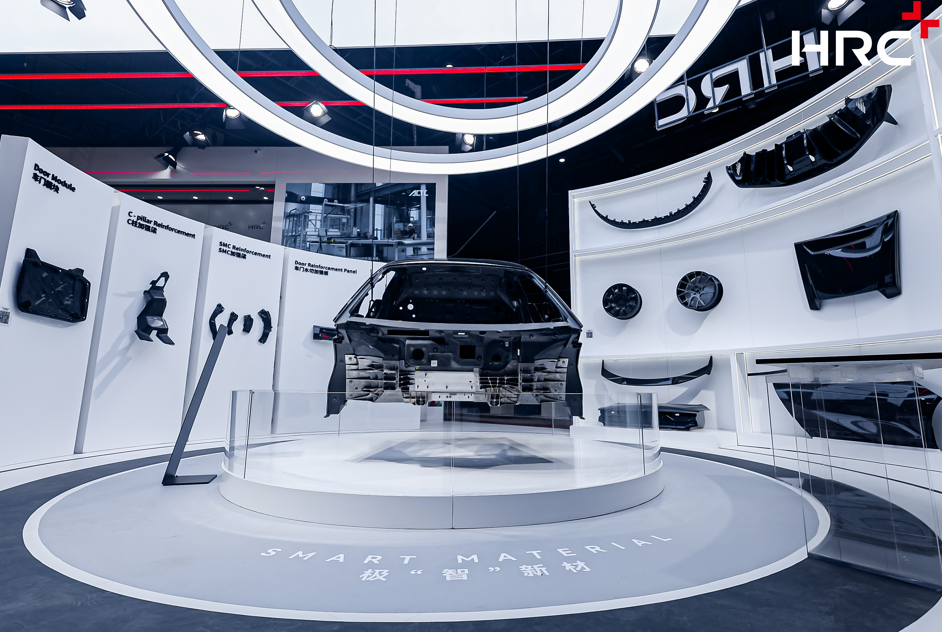
In the "Smart Materials" exhibition area, HRC unveiled several groundbreaking innovations, attracting widespread attention, among which the "Hybrid Monocoque " became a prominent highlight. Exclusively developed and manufactured by HRC, this product achieves a significant weight reduction of 30% compared to traditional steel-aluminum solutions, setting an industry benchmark with a lightweight coefficient of just 0.95. While maintaining extreme lightweight characteristics, HRC integrated over a dozen advanced joining process and adopted innovative technologies such as PMI inserts at critical parts to ensure excellent handling stability and crash safety performance under extreme working conditions, perfectly balancing the triple technical goals of lightweight, safety and driving pleasure.
As the world's largest carbon fiber monocoque, the "Hybrid Monocoque " creates a precedent for carbon fiber to be used as the primary structural material in high-end mass production models, demonstrating significant potential for carbon fiber in structural components and setting a new technological benchmark for future automotive lightweight structures.
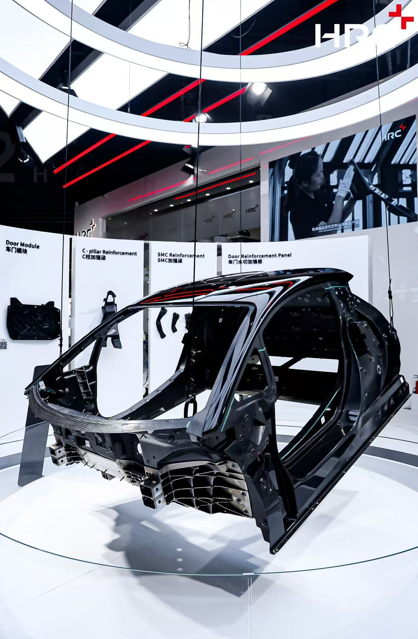
Additionally, the door module employing composite thermoplastic processing attracted considerable attention from industry experts. Widely recognized for industrial-scale production advantages and significant market potential, thermoplastic processing showcases superior productivity, cost-effectiveness, and sustainability, especially suitable for mass production of large flat structural components such as automotive door inner panels and power battery casings etc.
HRC’s door module utilizes integrated compression molding and injection molding, effectively eliminating secondary bonding processes. The application of fully automated molding technology ensures high consistency and stability, greatly enhancing production efficiency.

Stylish materials: Interpreting the design philosophy of "Tech Luxury".
Due to its distinctive texture and widespread application in top performance vehicles such as Formula 1 cars and supercars, carbon fiber composites has become an iconic element in high-end industrial design. In the "Stylish Materials" exhibition area, HRC brings together a variety of automotive interior and exterior parts combining visual impact and aesthetic enjoyment, perfectly fusing premium manufacturing with design aesthetics through flowing lines and lightweight texture.
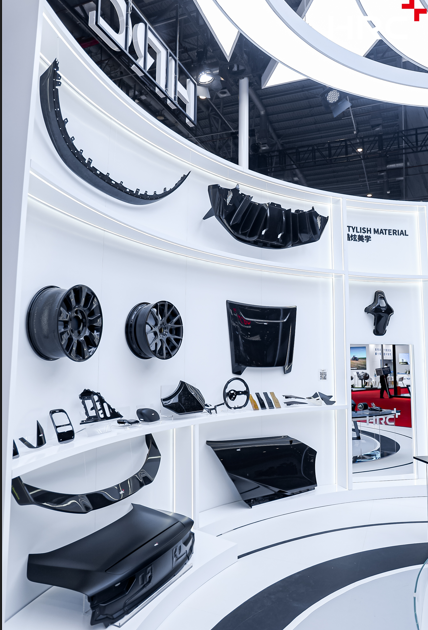
Among these, the full carbon fiber wheel known as the "eye-catching masterpiece on the road", reflects the futuristic appearance through unique carbon fiber textures interacting with light and shadow, making it the focal decorative element of the vehicle. In addition, this product reduces weight by over 40% compared to conventional metal wheels, effectively reducing the load on the vehicle's suspension system and improve the vehicle handling and acceleration.

As a star product fully designed with aerodynamic principles , the rear bumper lower trim assembly offers outstanding performance combined with a track-level aesthetic. It´s sharp, tall, and streamlined aerodynamic diffuser fins on the left and right lower bumper trims, paired with distinctive carbon fabric textures makes the product stands out dynamically or when stationary.
The aerodynamic winglet structures on the rear bumper lower trim panel assembly features sharp contours and thin, towering cross-sections. Thier sleek, streamlined design-enhanced by the distinctive carbon wave pattern-delivers a commanding presence , whether in high-speed motion or on static display.

Sustainable Pioneer: Driving Carbon Neutrality in Automotive industry
In the "Sustainable Material" exhibition area, HRC innovatively presents a landscapeof the full lifecycle of "Ecological System of Recyclable Composite Material” - deconstructing their origin, reuse, and transformation-while clearly mapping out the material’s value flow within a circular economy. As one of the few global high-tech enterprises completing the ecological closed loop from composite material development and industrial applications to recycling and reuse, HRC offers a one-stop solution to the industry-wide challenge of composite waste disposal and reuse through patented recycling technologies and series of innovative recycled products.

In the process of recycling carbon fiber composite waste into recycled carbon fiber, HRC not only achieves low energy consumption and no chemical pollution but also achieves more than 95% retention of the mechanical properties of the material.
As the main achievement area of the exhibition, HRC showcased series of recycled carbon-fiber thermoplastic components, including interior and air curtain plastic parts forming significant advantage in product diversity, process maturity and product completion. This marks the first global instance of a company who translated the implementation of carbon fiber recycling technology, intermediate products and end products into complete commercial practice. This approach provides additional pathways for the automotive industry´s carbon neutrality goals.



As a leading indicator of the global automotive industry, the Shanghai Auto Show is an arena for cutting-edge technology and inspiration for future mobility concepts. Amid rapid trends toward automotive electrification and intelligence, lightweighting remains a crucial prerequisite for enhancing performance, extending driving range, and ensuring safety. HRC will continue to empower the future mobility with advanced material technology, driving the automotive industry toward greater efficiency, intelligence, and sustainability.







